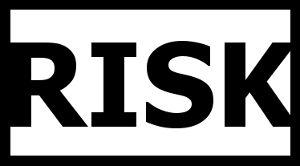ISHN conducted an exclusive interview with Sam Gualardo, National Safety Consultants, Inc. (www.safetyexcellence.org), who presented a talk at ASSE Safety 2014 on “Beyond Safety? Dealing with the real causes of worker and workplace risk.”
ISHN: What is the difference between workplace safety and workplace risk, as in the title of your presentation?
Sam Gualardo: Simply put, safety is freedom from risk. Risk is the chance of loss.
In the context of my presentation, I feel that we as EHS professionals and organizational leaders tend to focus more heavily on traditional workplace hazards to improve safety while huge organizational risks are looming -- placing large numbers of workers at risk every day.
For instance, we spend a lot of time assuring workers are protected from confined spaces, uncontrolled energy etc. while many wo rkers are fatigued as a result of uncontrolled overtime in their workplace. Many are actually provided financial incentives to take on additional risk (fatigue) while others are simply expected to do so as part of their assignment. You rarely find anyone in any workplace working a standard 40-hour work week anymore.
rkers are fatigued as a result of uncontrolled overtime in their workplace. Many are actually provided financial incentives to take on additional risk (fatigue) while others are simply expected to do so as part of their assignment. You rarely find anyone in any workplace working a standard 40-hour work week anymore.
Why is “risk” mentioned as much as “safety” in safety talks and literature today? What has changed?
I think the words safe and risk may have different connotations for many. Lawyers and EHS professional constantly debate whether anything can be safe and meet the classical definition of safe, or being free from risk.
Risk is inherent in every aspect of human existence. The word risk or risk reduction in the context of the EHS profession better represents what we actually do. We strive to reduce the chance of losses occurring through the application of layered controls. The use of the word risk takes away the classical argument that many often pose to EHS professionals to derail their efforts.
Describe one example of what you call an invisible organizational barrier to safety and health performance?
A good example of an invisible organizational barrier to safety performance excellence is how workers are compensated. Many workers are compensated for in ways that increase risk causation. A classic example is piece rate, where workers are paid more for the amount they produce. On the surface this sounds like a good idea but it can have a profound impact on workers and others exposed to the risk this creates.
Case in point in my hometown area -- many coal truck drivers are paid by the load delivered versus a flat compensation or hourly rate. Essentially, more loads delivered equates to more money in their pocket at the end of the day. This causes them to speed and crash their trucks -- continually harming themselves and other. A change to a compensation system can have a profound impact on worker safety.
Why are many of these barriers invisible? Can’t workers plainly see if senior leaders are not interested or engaged in safety issues?
These barriers become invisible as they are overshadowed by other organizational drivers, e.g. profit. As they remain overshadowed, workers clearly see leadership sending mixed messages such as -- be safe but work faster. Leaders will simply not address many of these barriers unless they are on their radar screen. And that is where our job as EHS professional comes in. It is our job to enlighten leaders about these barriers and how they are causing harm.
Describe one strategy to overcome an invisible barrier.
Creating visibility regarding these barriers is critical to getting them properly addressed. As long as they remain buried, they will remain overshadowed. Thus creating mechanisms to bring them to “out of the woodwork” and into the boardroom for proper debate and resolution is critical.
We recently saw where this did not occur and the devastating harm it caused to individuals involved, to an entire organization, stockholders etc. After the recent GM recall situation, they created a “Speak up for Safety” whistleblower type program to get unresolved issues causing potential risk and harm to the forefront.
Kudo’s to GM, but according to the news accounts, these recall issues were known and remained unresolved for years. By not having a simple and functional mechanism in place to speak up can keep issues suppressed and unresolved, causing increased risk for many.




